A Beginner’s Guide to Gardening
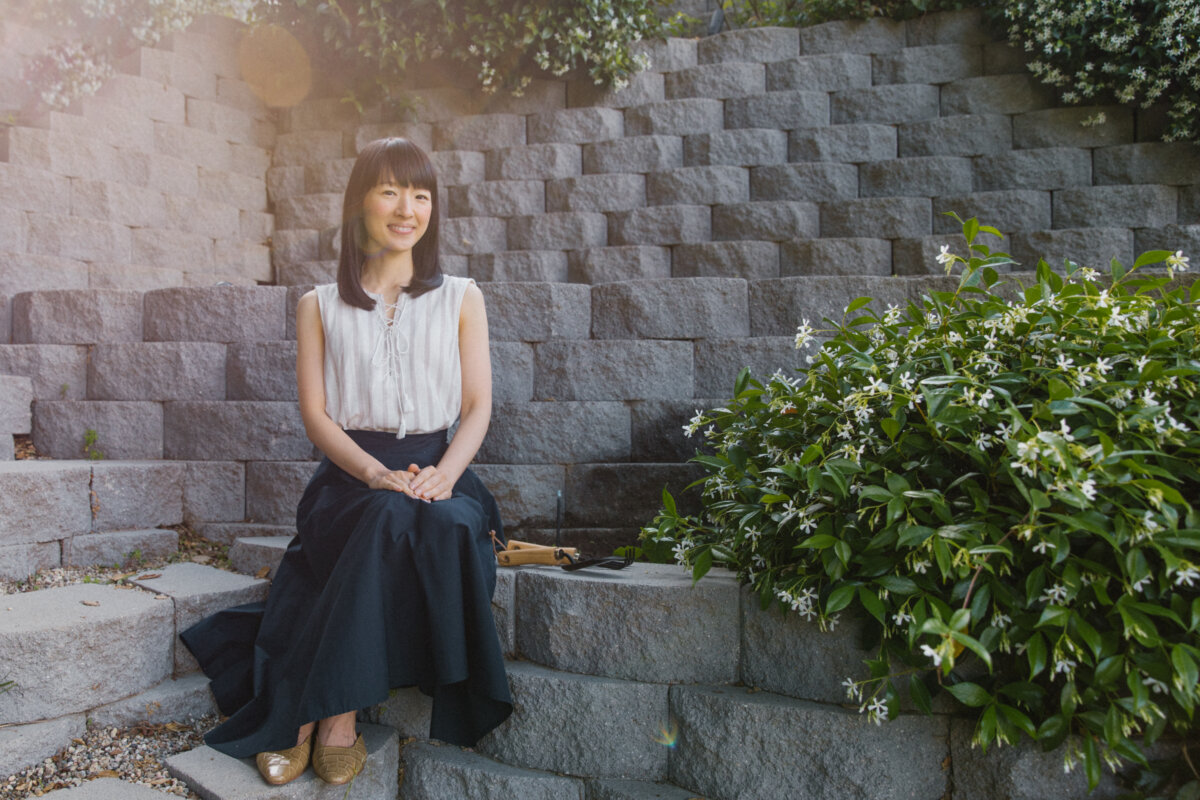
- Part 01Gardening Tools Checklist
- Part 02Outdoor Gardening for Beginners: A Guide Inspired by Japanese Garden Style
- Part 03Indoor Gardening and Container Gardening, the KonMari Way
- Part 04Tips for Gardening in Small Spaces
- Part 05How to Organize Garden Tools or a Garden Shed the KonMari Way
- Part 06Bonus Gardening Q&A with Marie

The magic of plant life — learning about, caring for and observing — is one of the unending sources of wisdom and pleasure in our world. Plants and gardens are also essential to our collective sense of kurashi. According to Marie, much like tidying, gardening is “a way to care for your environment and a chance to realize your ideal lifestyle.”
Just like each person is unique and has a different ideal lifestyle, we all have a different ideal garden. It might be a dedicated outdoor space or a few small jars on an apartment windowsill. Your plants will also each have individual ideal lifestyles of their own — especially when it comes to light, water, soil and containers.
It is up to us — their loyal owners — to watch and learn more about each plant’s needs and honor them with attentive, loving care. The following guide is written with beginner gardeners in mind, but is suitable for seasoned green thumbs, as well. Let’s get planting!
Gardening Tools Checklist
If you’re beginning a gardening hobby for the first time, you might feel overwhelmed by the many gardening tools available at nurseries and hardware stores. But you only need a few items to start your first garden project, no matter whether you’re gardening outdoors, indoors or in patio containers.
Here is our recommended gardening tools checklist, in order of priority:
Essential Tools for Beginner Gardeners
These tools will get you started gardening as soon as this weekend.
- Gloves – Look for durable, water-resistant, but not too bulky options, so you can easily plant seeds and do more delicate pruning jobs
- Hand trowel – For planting flowers, vegetables and more
- Watering can – For reaching and nourishing every root
- Pruning shears or secateurs – For pruning back plants but also for cutting flowers to place around the home
Nice-to-Have Gardening Tools
Perfect for taking your hobby to the next level, these tools will make your gardening experience even more joyful.
- An apron with pockets – For keeping clothes tidy and your shears within reach
- A lightweight gardening toolbox – For carrying tools to different corners of your yard
- Misting bottle or spray bottle – For keeping indoor plants moist
- Garden hose with adjustable nozzle – For outdoor gardening projects
- Rake and hoe – For tidying up flower beds
- Long-handle spade – For bigger planting jobs
- Microfiber towels – For dusting off indoor plant leaves, so they continue to reap the benefits of indirect light
- Garden tool cleaner – For keeping shears sharp and rust-free
- Wheelbarrow – For very large gardens or backyards
- A padded kneeling pillow – For staying comfortable during long hours pruning or planting
Outdoor Gardening for Beginners: A Guide Inspired by Japanese Garden Style
If you have ever enjoyed an afternoon in a Japanese public garden, you know that the experience feels transcendent. Koi ponds give way to carefully pruned cherry blossom trees or an outdoor bonsai garden. A simple walkway, shadowed by bamboo, encourages reflective silence. Every minute feels like a reset for the body and mind.
In recent years, Japanese-style landscaping has become increasingly popular in home gardens as well, bringing its signature simplicity to outdoor spaces of all shapes and sizes. We asked Jake Hobson, the founder of the Japanese gardening tool brand Niwaki (and resident KonMari gardening expert), to walk us through what defines Japanese garden style and a few tips on how beginner’s can use it as inspiration when creating a home garden.
What is Japanese Garden Style?
Traditional Japanese gardens pay tribute to the nation’s history of philosophy, culture and aesthetics. There are two distinct categories of Japanese gardens: those intended for tranquil reflection and those for walking or strolling. They feature plants native to Japan — like black and red pine or maple trees, moss, camellia and yew — and plenty of open space. These unplanted areas nod to yohaku no bi, or the beauty of empty space, which is “a reminder of the infinite potential that dwells within nature — and each of us.”
Most gardens also embrace the concept of wabi-sabi, the beauty of imperfection. Plants and materials are allowed to age gracefully, giving each Japanese garden its own unique, organic ambiance.
“I think Japanese gardens resonate so deeply with people because they create a sense of place,” Jake says, “There is a stillness and grounding. From large palace gardens to tiny courtyards, the Japanese approach immerses the viewer visually and emotionally, subconsciously transporting them to another place.”
Japanese Gardening at Home
While Japanese gardens are unique to Japan and its history, they can still inspire your garden design. Here are five tips for creating a tranquil private garden with a deep sense of place.
01. Focus on Feel
Long before you head to your local nursery, consider how you’d like to feel in your home garden. Ask yourself open-ended questions like:
- When you’ve spent time in nature, where have you felt your calmest?
- Does your ideal garden include a place to read or enjoy an afternoon tea ritual?
- Does it include plants or flowers that you can cut and bring indoors?
A garden should fit within your kurashi, or ideal lifestyle. Give yourself plenty of time to decide what a garden means to you — and commit to planting what sparks joy for you!
02. Honor Your Surroundings
Japanese gardens draw inspiration from their surroundings — a technique that makes them feel more grounded in the present. “Interestingly, there are similarities between Japanese garden style and certain North American styles,” says Jake, “Especially where native plants and landscapes are often the sources of inspiration — notably the Pacific Northwest and the arid gardens of the Southwest.”
Rather than forcing a design onto the landscape, let the landscape inspire your design. Choose plants that will thrive in your surroundings. Give plants plenty of room to grow, leaving enough space for their mature size. And don’t be afraid to leave some areas unplanted — the beauty of empty space.
Joyful Tip: Native plants also attract local species of butterflies and other pollinators, some of which won’t visit non-native species!
03. Embrace the Process
Japanese gardens respect the slow changing of the seasons — and weather any unexpected storms. Rather than avoiding plants that will take a few months or years to grow, lean into the process. “Plants take time, not just to grow, but for you to understand how they grow, to learn to get the best out of them,” says Jake. “Keep it simple, and don’t rush. Notice and appreciate the seasonal changes.”
As you wait for perennials, trees or shrubs to mature, you can co-plant a few annuals in the same beds to spark joy this year. Or try your hand at an indoor garden or ikebana to pass the time!
04. Learn Some Japanese Gardening Techniques
The best way to experience the style of Japanese gardens is to visit them. “To get inspired and build up knowledge and inspiration, I suggest making regular trips to local gardens and local countryside,” Jake says. “Bring a good old-fashioned plant book along for identifying species.”
If you’re not lucky enough to have a Japanese garden nearby — or if you’d like to explore further — there are plenty of online resources for budding gardeners. Jake recommends The North American Japanese Garden Association (NAJGA) and The Aesthetic Pruners Association (APA), which combines Japanese pruning techniques and practical solutions for tree and shrub care. Or try a gardening book! Jake has written two: ”Niwaki” and “The Art of Creative Pruning.”
05. Make Mistakes
No garden — not even a traditional Japanese garden — is perfect. Japanese garden style embraces these imperfections, and so should you!
“You’ll make mistakes,” says Jake, “Even if it’s not your fault, plants will die — it happens with everyone! Learn from those mistakes, learn from others, and learn to look at and appreciate it all.”
Ask any avid gardener: Embracing the unexpected can lead to countless joys.
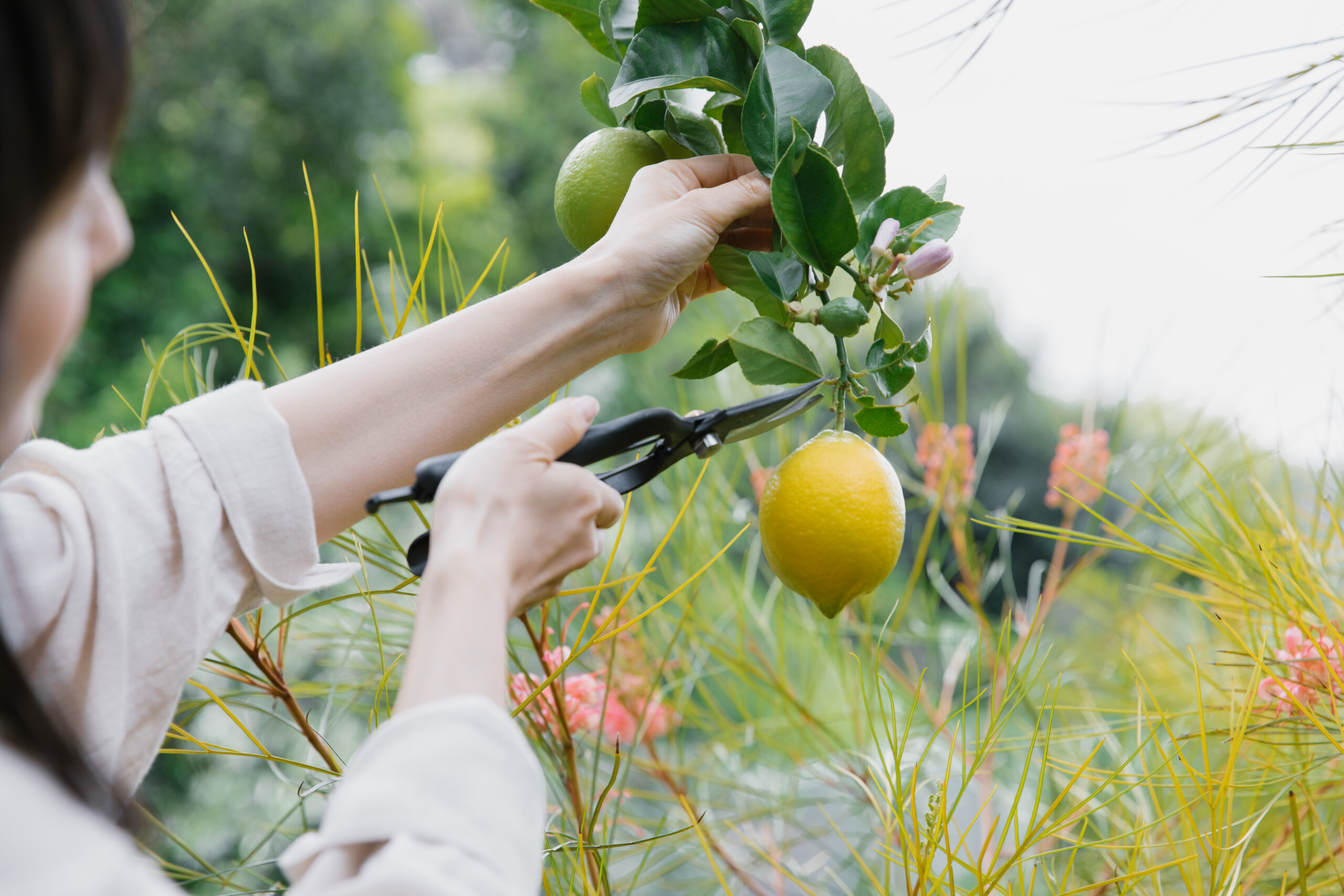
Indoor Gardening and Container Gardening, the KonMari Way
Plants are powerful — they allow us to invite the invigorating energy of the natural world from the outside in. With only light, water, soil, curiosity and patience, you can keep green things alive and thriving. You don’t need acres of outdoor space to try out your green thumb: indoor gardening brings the lively spirit of plant life —and the calming effect it holds — within your reach.
To perfect the art of indoor gardening in your home, focus on these 6 simple lessons.
01. Light
Setting up a garden inside requires some basic light awareness. Spend a day paying attention to where the sun comes into your home, including through doors, windows or skylights. Notice how it moves through the course of the day and how long it lasts — this alone can be a powerful act of meditation and awareness.
The source and path of light will determine where you place planters and pots for the best chance at growth. Most plants need light, but different species thrive with different levels. Research what your plants prefer — full sun, partial sun or shade. Ensuring a successful gardening journey means choosing plants and seeds that match the light quality in your home. If one plant is getting too much or not enough sun — which you can tell from scorched leaves or stretched stems and yellowing leaves, respectively — adjust their location and pay attention to how they respond.
02. Water
Plants need water, of course. But each plant differs in how much water it might need. Underwatering and overwatering are easy to do and are a common misstep in indoor gardening.
The roots of plants need a healthy amount to drink, but too much water and they’ll get waterlogged and can rot. Give each plant a joyful and safe home by choosing a pot with proper drainage — not one that keeps water near the roots for too long or not long enough!
Your plants will let you know what they need. Just watch closely!
“The love and gratitude I give to my belongings is the same as the care and passion I put into my plants. Both practices are meditative and relaxing for me; I feel focused and calm after doing either of them.”
— Marie Kondo
03. Soil
Choose a potting soil best suited for each plant in your home. Different soils have different drainage, minerals, nutrients and ingredients. Cacti and succulents often have a soil that holds water temporarily but then drains very effectively, since they prefer a drier soil. Fluffier soil that holds more air pockets is great for plants with aerial roots like orchids or monsteras.
The pH levels in potting soils from garden stores is often already predetermined, so it’s a straightforward process to find the best fit. If you want to know more about how different plants grow and thrive, soil is a rich (no pun intended!) territory to explore.
04. Tools
You don’t need much to keep plants happy, but a few gardening tools may certainly make it easier. A watering can with a spout keeps water from hitting your floors. A pair of gardening scissors is great for nipping off dead leaves or broken stems. If you are growing cacti or thorny species, these bamboo gloves are great for protecting your hands. Keep your gardening tools – like scissors, watering cans, misters, gloves, plant food, pebbles and soil – organized together. This way, your plants grow – but your clutter doesn’t!
05. Containers
Growing plants need the right-sized pot like a hermit crab needs the perfect shell. There are many beautiful containers to choose from – or you can joyfully repurpose one you have.
If you are repotting a plant from its store container, make sure the pot lands in the sizing sweet spot: it should have enough space for the plant’s roots but also be fitted enough for stability.
A layer of pebbles on the bottom can help with drainage. Then, place the root ball into the pot and surround it with new potting soil. Gently press the plant in (don’t pack it hard!) and give it a good drink of water as it settles into its new home. A tray underneath the pot is good for keeping a reservoir of water and preventing any leakage.
06. Seeds
Starting plants from seed is its own challenge, but if you have full light or can boost with artificial grow lights, nursing plants from sprout to fully grown can be wonderfully rewarding. If you have an outdoor garden, it’s often beneficial to start your seedlings indoors with a controlled temperature before moving them when the weather is right.
Start seeds in yogurt cups or egg cartons, with lights that can be easily repositioned higher as the seedlings grow. Seedling soil should be moist but not clotted with water. Seedlings — just like puppies or babies — need more attention than adult plants. But, if you are ready to begin a seed journey, the possibilities are endless.
Gardening can be meditative and intentional, just like tidying. Plants have lots to teach us about patience, attention and a simplicity of needs — just a little sunlight, water and loving care. Be open to the lessons that plants can teach you and you will be rewarded by the joy — and literal breath of fresh air — they bring to your home.
Tips for Gardening in Small Spaces
01. Find Forgotten Corners
Any space with light can be used for small container gardening, so think creatively! Window sills, including bathroom window sills, and small porch corners can accommodate small space gardens.
02. Think Vertically
If limited on space, think vertically. Use tall garden shelves or hanging compartment gardens to grow a garden on the side of your apartment or even indoors.
03. Repurpose Small Vessels
Any container can become a home for a small garden, including old glass yogurt jars and repurposed ceramic vessels or vases.
Joyful Tip: Many plants, including the popular indoor pothos plant, can grow in water without soil. That means you can start a small-space garden with only a small jar and half an inch of water!
04. Plant Only What Sparks Joy
When space is limited, plant the flowers, herbs or vegetables that you love and leave the rest. Even a few blooms will delight you when they are your absolute favorites.
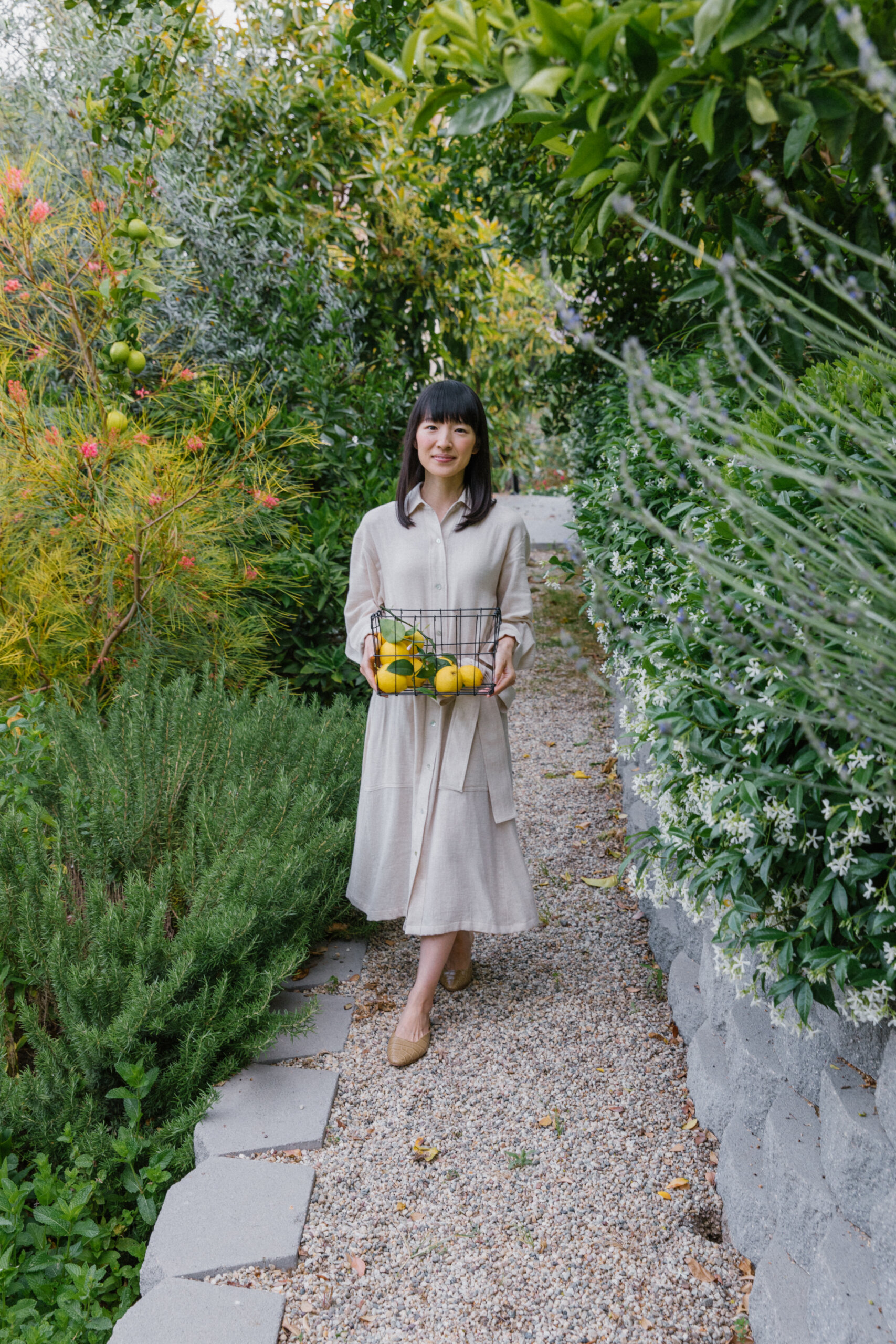
How to Organize Garden Tools or a Garden Shed the KonMari Way
If you are already familiar with the joys of gardening, you have likely acquired various tools, pots, seed packets and bags of soil over time. Treating a garden shed as a catchall for miscellaneous supplies is certainly tempting, but this can cause a garden shed to quickly slide towards disorder — much like an oversized junk drawer.
Whether you have a small shelf or drawer dedicated to gardening supplies or have your own garden shed, the following KonMari-approved method will help you keep all your gardening tools tidy.
01. Imagine Your Ideal Garden (and Shed!)
The purpose of a garden or potting shed is to support your passion for gardening. Before you begin your tidying project, take a few moments to imagine your ideal garden. By visualizing the outdoor space you’d like to have, you will quickly get a sense for what gardening tools and supplies you need to bring this vision to life — and which you can let go of with gratitude.
02. Take Everything Out
Everything! The goal is to empty your shed. Place everything on a nearby patio or even a drop cloth in the grass to see exactly what you have. You may be surprised by how much you’ve acquired, but don’t be too hard on yourself — you’re committing to only keeping what you’ll use in the future. And remember, by tidying using the KonMari Method™, you’ll only need to do this process once!
03. Tidy by Category
Before you even consider what to keep or discard, group supplies by type and function. Think “like with like.” Focus on one category at a time. For garden sheds, we recommend the following order:
- Aprons, gloves, garden clogs and other wearables
- Tools, supplies and gardening accessories, such as spades and shovels
- “Paper goods,” such as gardening how-to books and seed packets
- Gardening komono, or miscellaneous items, such as twine or lawn ornaments
- Any sentimental items, such as gardening gifts from loved ones
As a rule of (green) thumb: When tidying with the KonMari Method, choose groupings that work best for you. If you prefer splitting gardening tools into winter and summer sets, then perfect! The goal is to find categories that make life easy and joyful.
04. Let Go, Donate and Discard
Set aside any items that no longer have a place in your ideal garden. That list includes broken items, tools you haven’t used for years, damp seed packets or damaged planters. It might also include items that simply never sparked joy, such as a gifted bird feeder or an itchy pair of gardening gloves.
Divide discarded items into a few piles: one for fellow garden-loving friends (invite them over for tea and let them take anything they want or need!), one for donating (tools and supplies) and one for discarding (broken items). Try to donate everything you can — even if an item fails to spark joy for you, it could bring joy to someone else.
Joyful Tip: If you find you have too many pots, fill them with favorite plant cuttings for neighbors and friends. They make for a joy-sparking housewarming gift.
05. Organize and Label
It’s now time to put everything back. Use organizers in different sizes to divide your garden shed, grouping similar items together. We love using empty plastic planters to organize and store seeds in one place and wall organizers to keep tools within easy reach.
Don’t forget to label everything! This step will help you locate seeds from previous seasons or quickly find the container that holds twine and wire — especially useful when your hands are filled with plants or covered in soil!
06. Commit to a Tidy Space
When you’ve finished tidying your garden shed The KonMari way, it will feel like a breath of fresh air. Moving forward, treat this space like you would your home. Return items to their designated places after each use. As you acquire new seeds or tools, assign them a place of their own. This simple maintenance will ensure that your potting shed — and garden — sparks joy for many years.
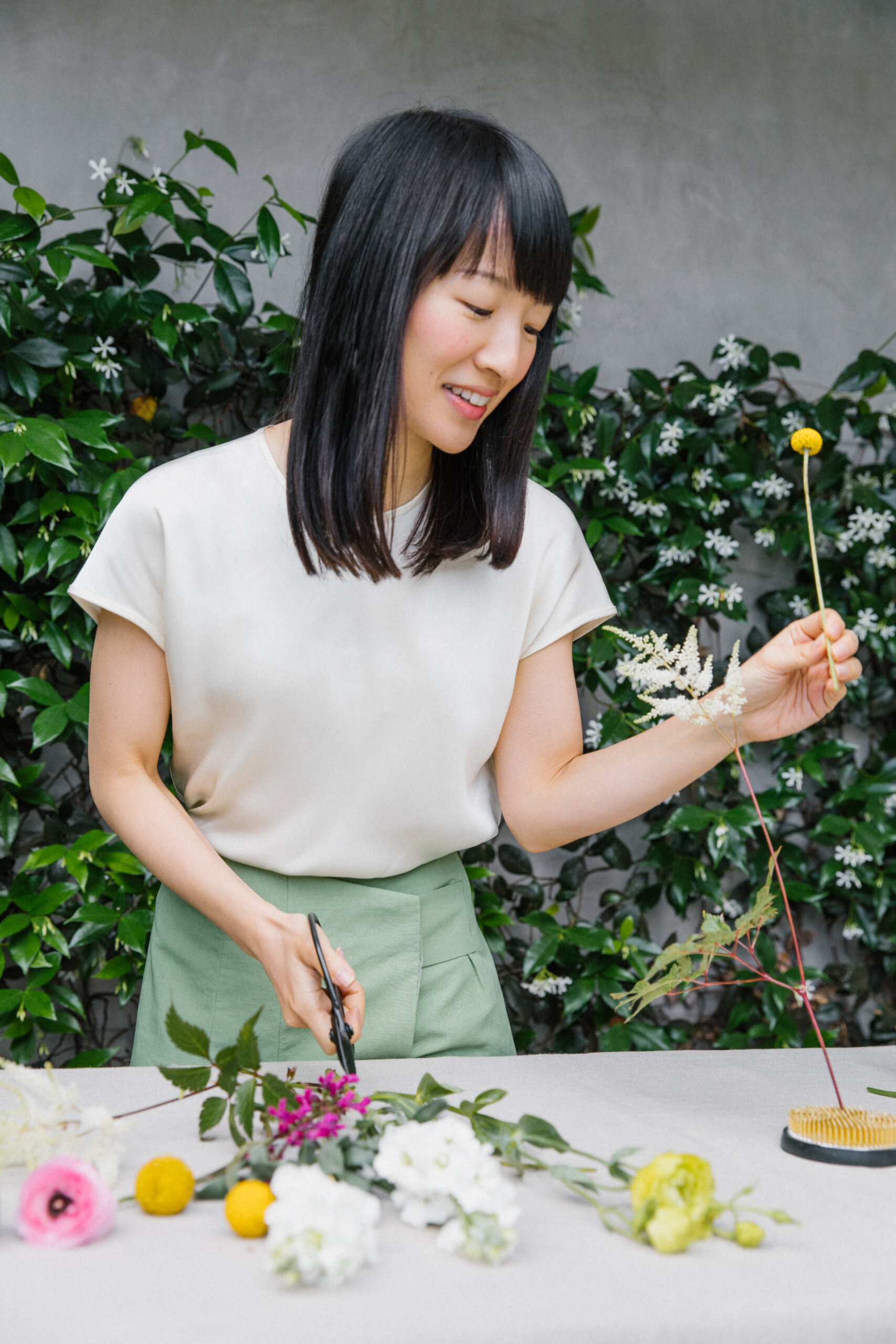
Bonus Gardening Q&A with Marie
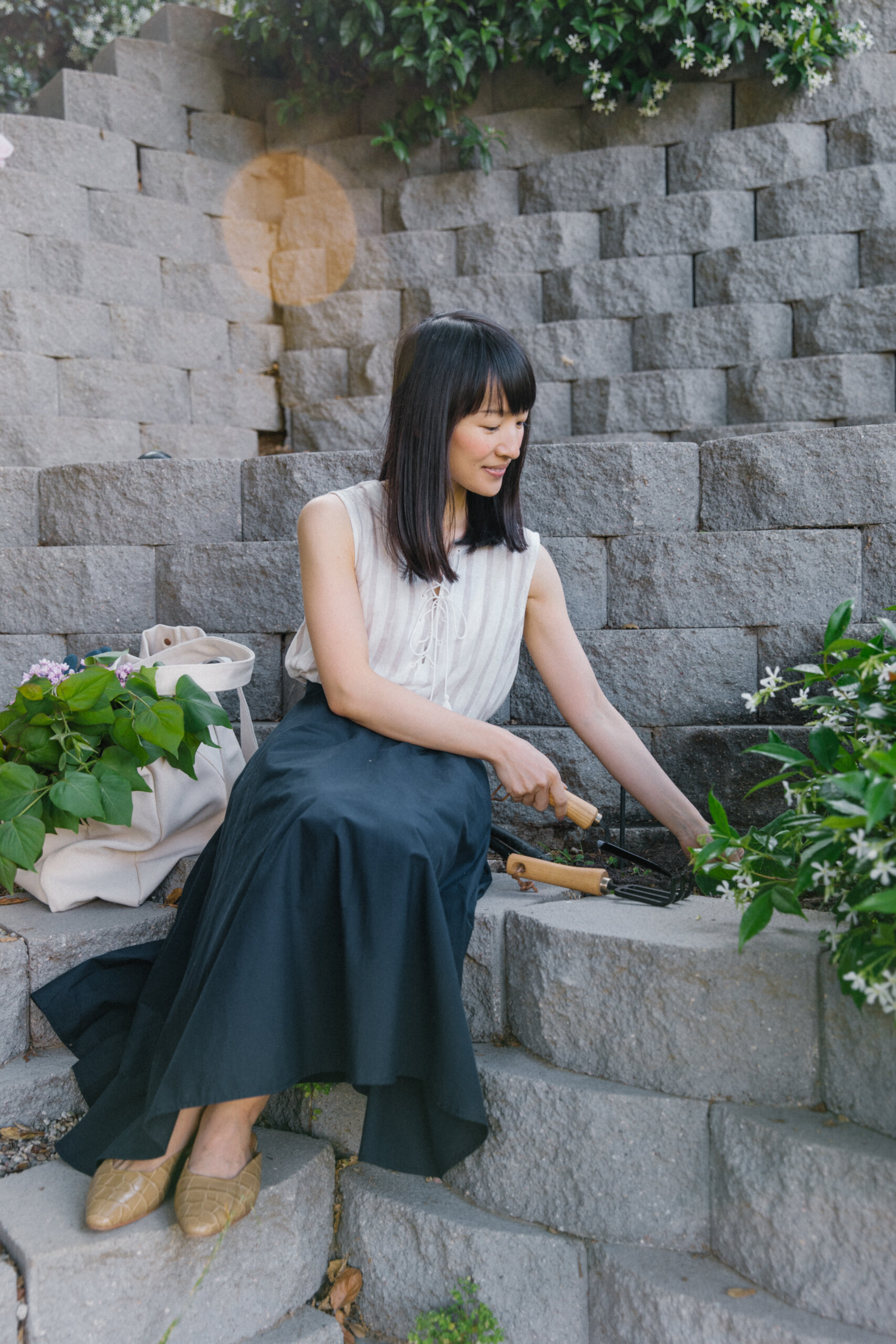
Marie too started gardening only recently. As a novice gardener, she relishes in moments spent communing with nature in her own backyard — especially in her beloved vegetable garden. We asked her about the ways in which gardening is like tidying, what her desert-island vegetables are and if she’d ever raise chickens.
KM:
You’ve shared that if you could switch jobs with anyone for a day, it would be with a farmer. Why? Do you have a lot of experience with gardening?
MK:
I only started gardening a few years ago. At first, I grew herbs inside – but it didn’t work out very well. When I moved to the states, I enjoyed having space for an outdoor garden for the first time, which helped me hone my skills. Now, I cannot picture life without gardening!
KM:
What did you plant first?
MK:
I stuck to the basics – tomatoes, kale and celery. My kids chose celery – they love it! We also have a lemon tree, which I visit daily so I can add lemon to our water – such a simple luxury.
KM:
What’s your gardening schedule?
MK:
Ideally, I go in the morning before it gets too hot, and then again in the late afternoon. I enjoy it most when there’s not too much to harvest and I can focus on appreciating the garden’s natural beauty. Visiting my garden is like going on a mini-retreat – it’s a chance for me to relax, connect with the earth and make sure the plants are healthy.
KM:
Do you talk to your plants?
MK:
I do! I ask them how they’re doing and give them encouragement. It feels very natural to me – an extension of how I talk to my belongings and thank them for their support; I believe our possessions last longer and work harder for us when we acknowledge how vital they are. The same is certainly true for plants.
KM:
In what other ways is gardening like tidying?
MK:
They’re both ways to care for your environment and a chance to realize your ideal lifestyle. If I have outdoor space, I think of it as an extension of our home – I want it to spark joy, too! The love and gratitude I give to my belongings is the same as the care and passion I put into my plants. Both practices are meditative and relaxing for me; I feel focused and calm after doing either of them.
KM:
Your grandparents had a traditional Japanese Zen garden. What do you remember about it? Did you spend time there, or was it more for observing?
MK:
Their garden was very traditional – and very beautiful. It had a large rock in the middle, a small koi pond and a Matsu pine. My grandparents lived in that house until I was four, and I remember sitting on the veranda with my grandmother and just taking it in, which is a typical way to interact with that kind of garden. There was bamboo and lots of greenery – and purple and blue hydrangea. It was very calming.
KM:
Describe your dream garden. What does it look like? What would you grow?
MK:
I’d like to be able to prepare all of our meals from the garden, so I’d grow…everything! Definitely a big section just for herbs – I make simple herb salads and fresh herbal tea every day. I’d also really like to make Japanese pickled plums – umeboshi – so I’d plant a few plum trees, too.
Having a koi pond would be fun…I appreciate the beauty of Japanese gardens and I enjoy English gardens, too. My dream would be to have different sections of the garden with their own personality and style. That would be really ideal.
KM:
What about flowers?
MK:
Of course! I would plant flowers that bloom seasonally so we could enjoy them throughout the year.
KM:
Would you ever consider raising chickens? What about goats?
MK:
I would! I think I’d start with chickens and take it from there. I never considered raising chickens before moving to the states, but my interest was piqued seeing people do it in California.
KM:
Do you think you could live off the grid and grow your own food?
MK:
Going completely off the grid would be difficult, but, when it comes to food, I think I could grow most of ours and buy the rest straight from other growers.
KM:
Is there a Japanese equivalent for the term “green thumb” – someone who can make seemingly anything grow? Do you think you have one?
MK:
In Japan, people just say they’re really good with plants; until recently I wouldn’t have been able to say that, unfortunately! I’ve had a few houseplants that didn’t make it. But from now on, I would like to have a green thumb.
KM:
If you could only eat three vegetables for the rest of your life, what would they be?
MK:
This is very hard to narrow down. Spinach; shiso – a leaf that’s in the mint family; and pumpkin.
Oh, wait! I forgot about carrots. I eat them everyday – they’re like air. So get rid of spinach. Carrots, shiso and pumpkin. That’s my final answer.
KM:
What’s your favorite fruit?
MK:
Figs.
KM:
Favorite flower?
MK:
Gerbera daisies.
KM:
Have you ever tried bonsai?
MK:
Not yet, but I’m very interested.
KM:
Earthworms – do they spark joy?
MK:
Not on their own, but I know they’re important for the health of the planet, so I appreciate them.
KM:
If you were a fruit or vegetable, what would you be?
MK:
Some kind of root vegetable – like burdock – or maybe a carrot because I eat so many. I know for certain that my husband Takumi is an orange.
***
Whether you’ve never gardened before or are a natural green thumb, we hope this beginner’s guide to gardening has inspired you to try something new. There are so many hobbies that spark joy, but gardening in particular, does something profound for the soul.
Bookmark this guide for future use — every season brings an opportunity for new gardening projects! — or forward it to someone who loves spending time with their hands in soil! Gardening is even better when you share the experience with someone you love.







